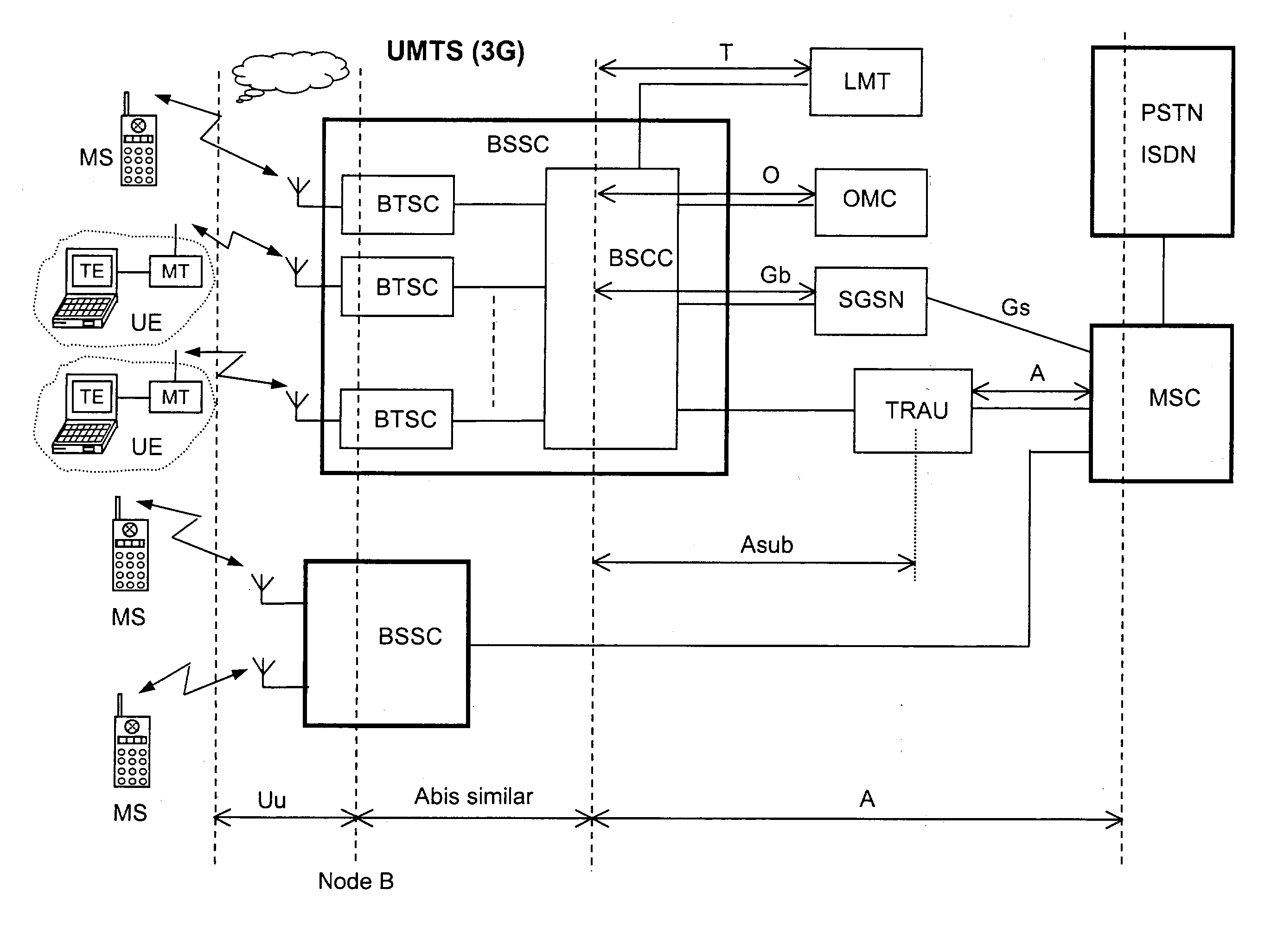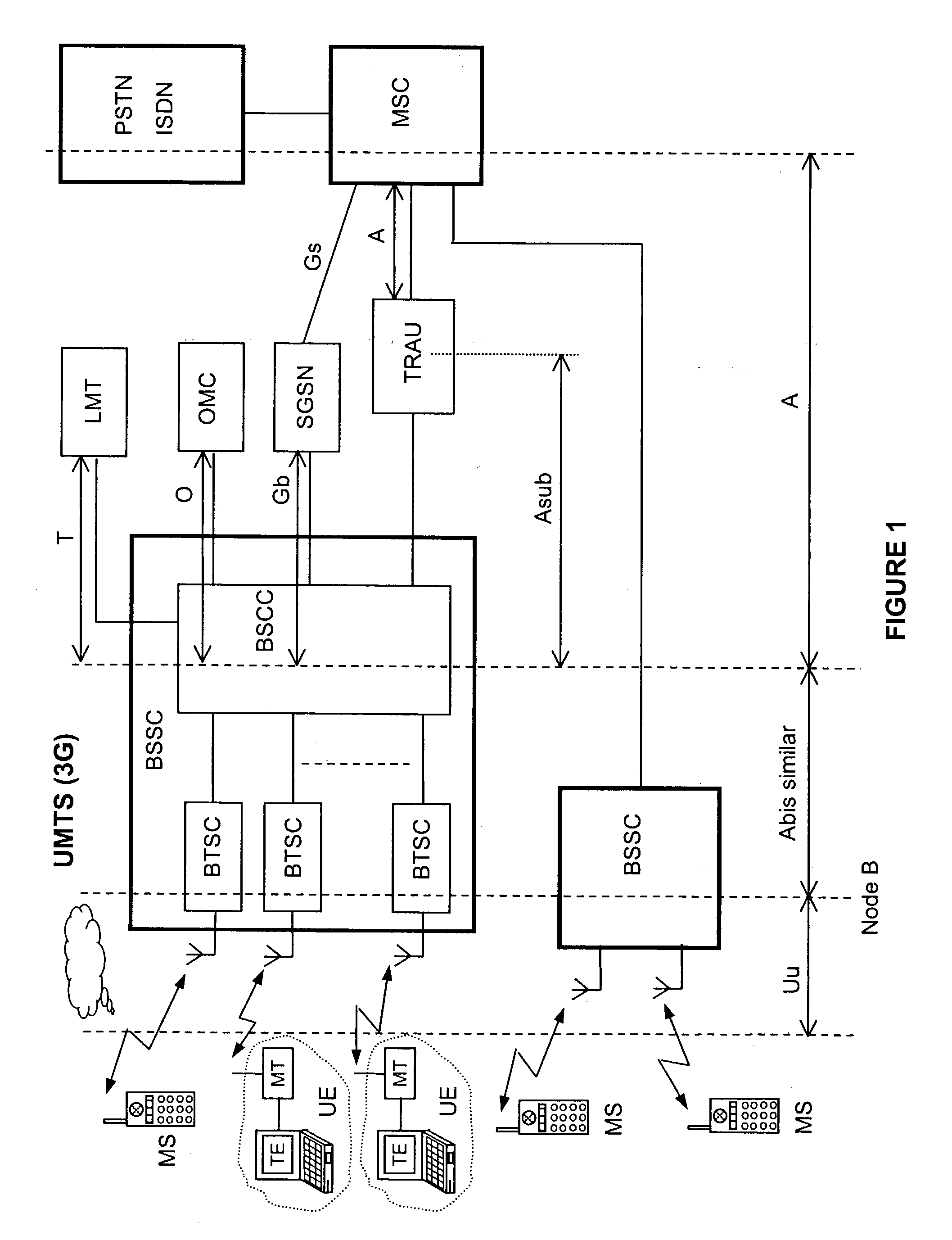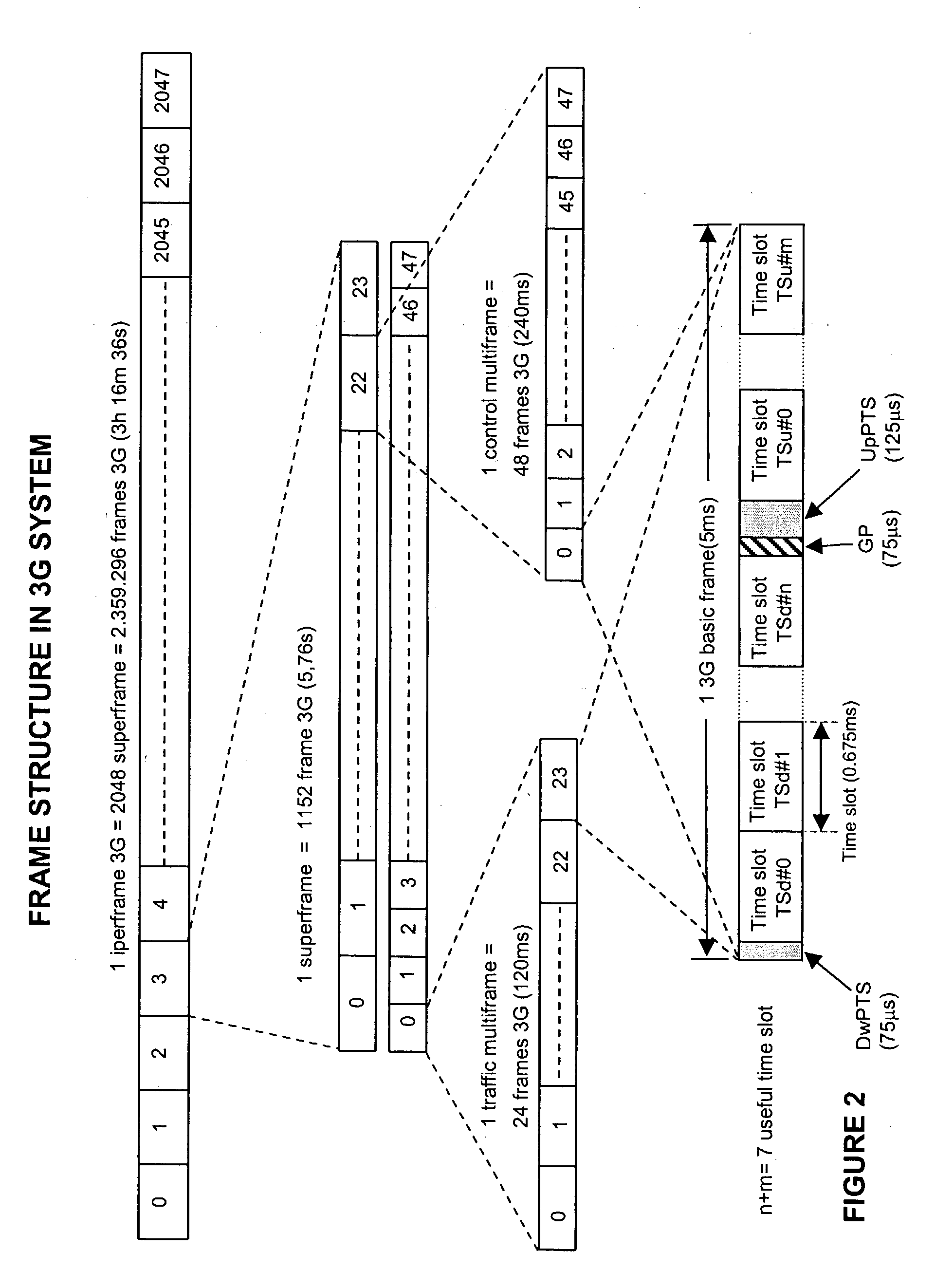Method for optimizing the random access procedures in the cdma cellular networks
- Summary
- Abstract
- Description
- Claims
- Application Information
AI Technical Summary
Benefits of technology
Problems solved by technology
Method used
Image
Examples
Embodiment Construction
[0053] FIG. 1 shows a brief but clear block diagram of the functional architecture of an UMTS mobile radio telephony system (3G) where the invention that shall be described resides. In FIG. 1, both portable telephone sets MS (Mobile Stations or Mobile Units), also vehicular ones, and portable User Equipment units UE, are radio connected with relevant TRX transceivers (non-visible in the figure) belonging to relevant base transceiver stations BTSC (Base Transceiver Station for CDMA) spread on the territory. Each portable User Equipment unit UE is constituted of a Terminal Equipment unit TE (typically a Personal Computer) connected to a Mobile Terminal unit (typically a telephone set) for data transmission in packet format.
[0054] Each TRX is connected to a group of antennas whose configuration assures uniform radio coverage of the cell served by the BTSC, also termed Node B. A group of N adjacent cells, that altogether engage all the carriers available to the mobile radio service, is ...
PUM
 Login to View More
Login to View More Abstract
Description
Claims
Application Information
 Login to View More
Login to View More - R&D
- Intellectual Property
- Life Sciences
- Materials
- Tech Scout
- Unparalleled Data Quality
- Higher Quality Content
- 60% Fewer Hallucinations
Browse by: Latest US Patents, China's latest patents, Technical Efficacy Thesaurus, Application Domain, Technology Topic, Popular Technical Reports.
© 2025 PatSnap. All rights reserved.Legal|Privacy policy|Modern Slavery Act Transparency Statement|Sitemap|About US| Contact US: help@patsnap.com



